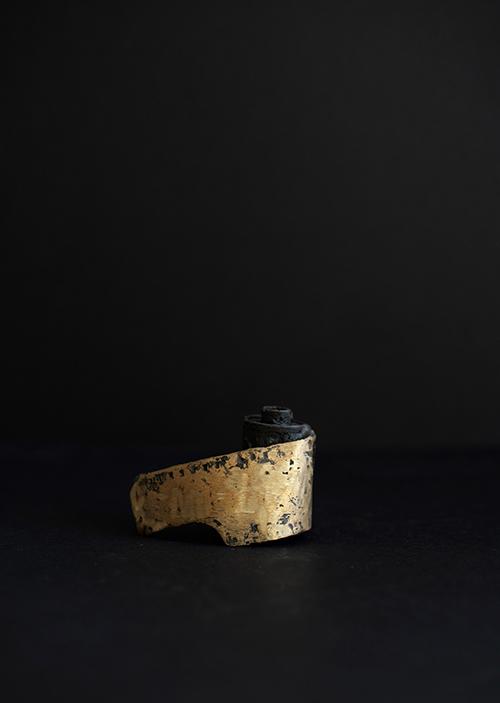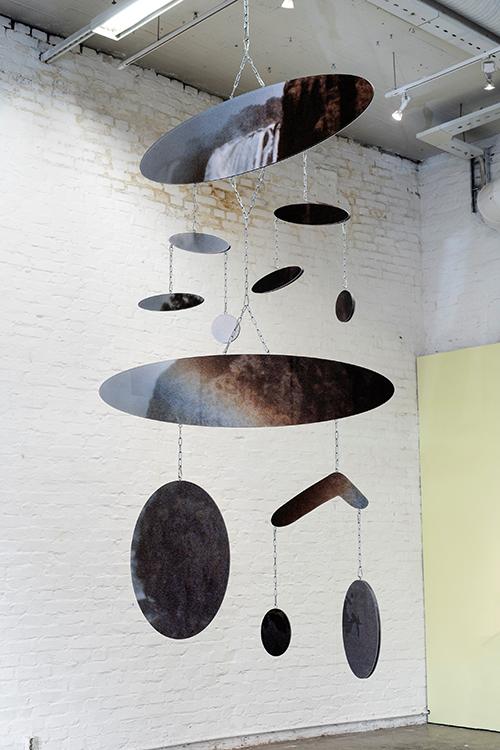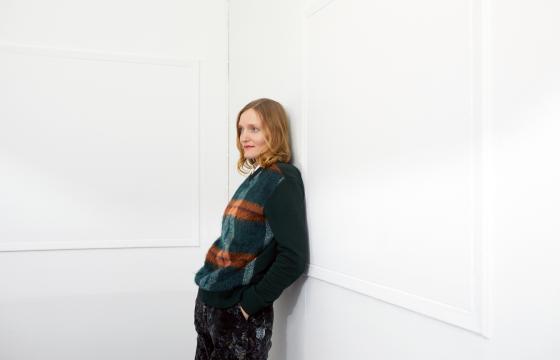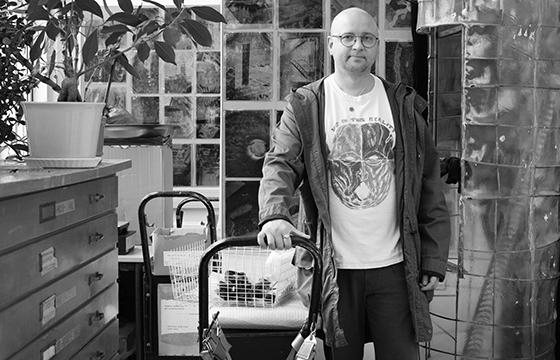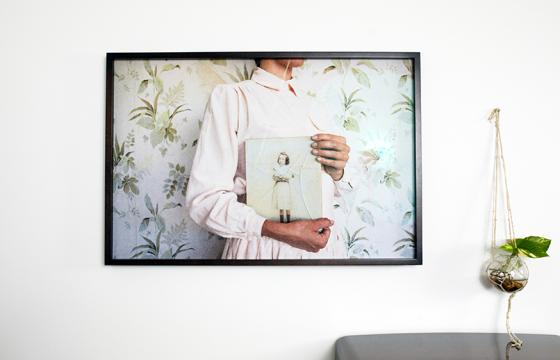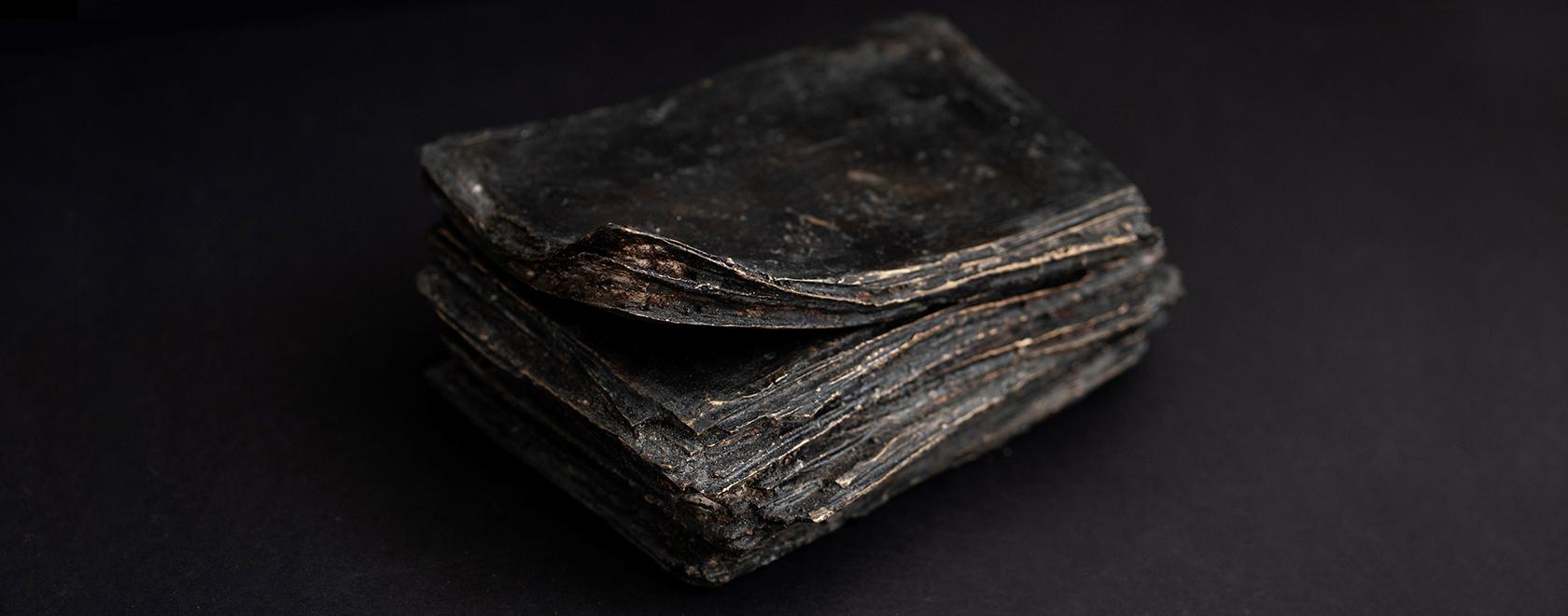
Text: Athanasía Aarniosuo
Photos provided by the artist
My call finds Hanna Råst at her flat, where she spends a lot of her time reading and researching. A lovely old atelier apartment, it is not a space she wants to get messy. For that she has a studio space in Roihuvuori, in a building where over thirty artists work. She enjoys working, if not always with other artists, definitely near them. Which is why she enjoys spending time at artists’ residencies, too. She enjoys the space and the time they provide to experience new environments and think without being forced to produce. In her practice, Hanna works in a variety of media, using archival material – often photographs – in order to investigate topics of memory, remembering, and past trauma. Having time to reminisce and remember is crucial.
Hanna remembers her time in Copenhagen’s Fonden FABRIKKEN for Kunst og Design residency fondly. The three-month period (between April and June 2022) was long enough for her to do a lot of intensive research, read and think, experiment with new techniques, as well as take in the city and its people and galleries. Fabrikken offered Hanna the opportunity to put on an exhibition at the end of the residency period, but she felt she needed to focus on her work, without the pressure of a final outcome. She enjoyed the relaxed atmosphere, having long conversations with the other artists with whom she shared ideas and opinions. Curators’ visits were also organised by Fabrikken.
All in all, Hanna found the residency period relaxing, fruitful, and necessary, and the residency itself very well organised. The only thing she wishes had been a little more convenient is the distance between her accommodation and her studio. At 8 km apart, and with no conveniently located public transportation stops nearby, swapping between the two spaces meant 16 km of daily cycling, often carrying heavy loads, no less.
From light mobiles to heavy sculptures
Originally, Hanna intended to spend her time at Fabrikken working on a mobile sculpture consisting of metal frames and some old photographs from Hanna’s personal archives. However, transporting all the materials to Copenhagen only to have them shipped back soon after seemed a little too complicated. When she expressed her worries and wishes to the staff at Fabrikken, they were eager to suggest she worked at Vestsjællands Arbejdende Kunstværksteder (VAK) instead, creating bronze casts. Working with bronze casting was something Hanna had loved when she was still in art school but hadn’t had the space for since 2016, so she jumped at the idea.
The workshop, Hanna tells me, was an open, friendly place, where everyone worked next to each other, sharing ideas and processes. Hanna felt warmly welcomed, and she was able to complete, with the kind assistance and supervision of the workshop master, two small sculptures and a few experimentations during her time working there. As bronze is such a heavy material, Hanna thought the heaviness of the objects created should reflect heavy themes as well, which is why both sculptures, albeit small, are heavy with memories and thoughts.
With using photography as a starting point, the sculptures deal with the weight of one’s past. The weight of a memory is a mental, spiritual weight; giving that weight material form is what Hanna set out to do at VAK.
For the first of the two sculptures, Hanna used a pile of old family photographs. The shape of the pile, when cast in bronze, doesn’t give away any of the memories present in the photographs themselves. In a way, in erasing the content of the photographs, Hanna creates a space for the viewer to reflect on their own past and on their own memories. What moments are kept in photographs? Which moments does each one of us value worth keeping, moving with us from flat to flat, in albums, or in shoeboxes, kept with us through the years?
The sculpture is very small – the actual size of a pile of photographs – but very heavy, approximately 7 kgs. The weight is important and emphasised the weight of the memories themselves. When those memories are destroyed, or erased, we are left with blank spaces, with holes where the memories should be. What happened in the past? Why can we not remember?
The second sculpture reflects upon these same topics, investigating matters of erased memories and hidden parts of the past. A roll of a film acts as a metaphor for lost memories, a container of memories we can no longer access.
The first one of these sculptures, called Muiston paino / Weight of Memory (2022), is currently on display as a part of the group exhibition “In Continuous Dialogue: Tracing Memories” curated by Noora Lehtovuori. The small sculpture exhibited at gallery Oksasenkatu 11 is deceptively heavy, and Hanna encourages visitors to lift it up and feel its weight. The exhibition can be visited until the 29th of January 2023. The exhibition is the first of two, with the second one coming up in November 2023. For the second part, Hanna intends to create a new work, dealing with similar themes of remembering, forgetting, and weight.
Remembering and forgetting
Hanna has always been curious about how memory works, possibly because her own memories of the past are often vague. Using her background in photography as a starting point, she likes to investigate the role of a photograph in remembering – and forgetting. Most of us have photographs from our childhood, of events that we cannot actually remember, the photograph acting as the only proof that something did really happen. Some of us also have false memories; we think we remember something happening, only to realise that what we actually remember has been reconstructed from a scene we have seen in a photograph.
Sometimes the memories we do not have are actually more meaningful than the ones we do. Hanna is interested especially in the gaps in our memory; the things we find too painful to actively remember have a way of making themselves present in their absence. They leave gaps, holes in our memory that are so big and so obvious that we cannot ignore them. Our minds have interesting ways of dealing with these gaps, the remnants of painful memories. Sometimes we try to fill them in, creating new versions of the past within our minds. Those fake memories are shifting, however, as the way we look at our past changes as we live and grow.
Hanna intentionally looks into the gaps and the absences that tend to cover up painful memories. Her gaze does have sympathy and kindness, too – not only sorrow.
Archeological sites
This introspective research into one’s own past and memory finds another way to manifest itself in the form of Hanna’s other current and ongoing project, one that she started researching while at FABRIKKEN. While the bronze sculptures deal with forgotten personal memories, this other project – that Hanna refers to as her “archeological project”or a “project of ruins” – deals with collective memory and looks into the land that Hanna’s family has owned for generations. The land has been lived in since the 17th century and Hanna herself remembers it from her own childhood.
With signs of population and ruins scattered around the now overgrown area, the project has encouraged Hanna to acquaint herself with archaeological research methods and techniques. Although Hanna has already spent some time researching the area and reading about it, the final form of the work is still unknown. At first, Hanna thought the research would result in a site-specific piece, situated in the area itself, but now it seems that the area will only present itself in the work as a premise.
The questions the project raises are many and varied. Does investigating the past also help re-evaluate the future? Who has the right to a land? Does designating the area for some people automatically mean that it excludes others? These are questions that Hanna is hoping to, if not answer, at least assess.
Current processes and future plans
Hanna’s time at FABRIKKEN instigated many processes, the results of which are seeing the light of day currently and in the future.
A public art project commissioned by Helsinki City and Helsinki Art Museum HAM was being finalised during the time our discussion took place and is now fully installed at a primary school in the Pohjois-Haaga neighbourhood in Helsinki. The 33-metre-long installation titled Chronology comments on the many layers of history. A book of poetry is planned to be published this spring. Published by the Yö ry association, the book is a first for both the association and Hanna. Hanna is also looking to travel to Rome’s Villa Lante this year, supported by Wihuri Foundation. There, just like in Copenhagen, Hanna may find herself researching a space that is simultaneously strange and familiar, a memory of a place that doesn’t quite match reality.
Finnish Cultural Foundation’s residency programme is maintained and developed in collaboration with HIAP – Helsinki International Artist Programme.
